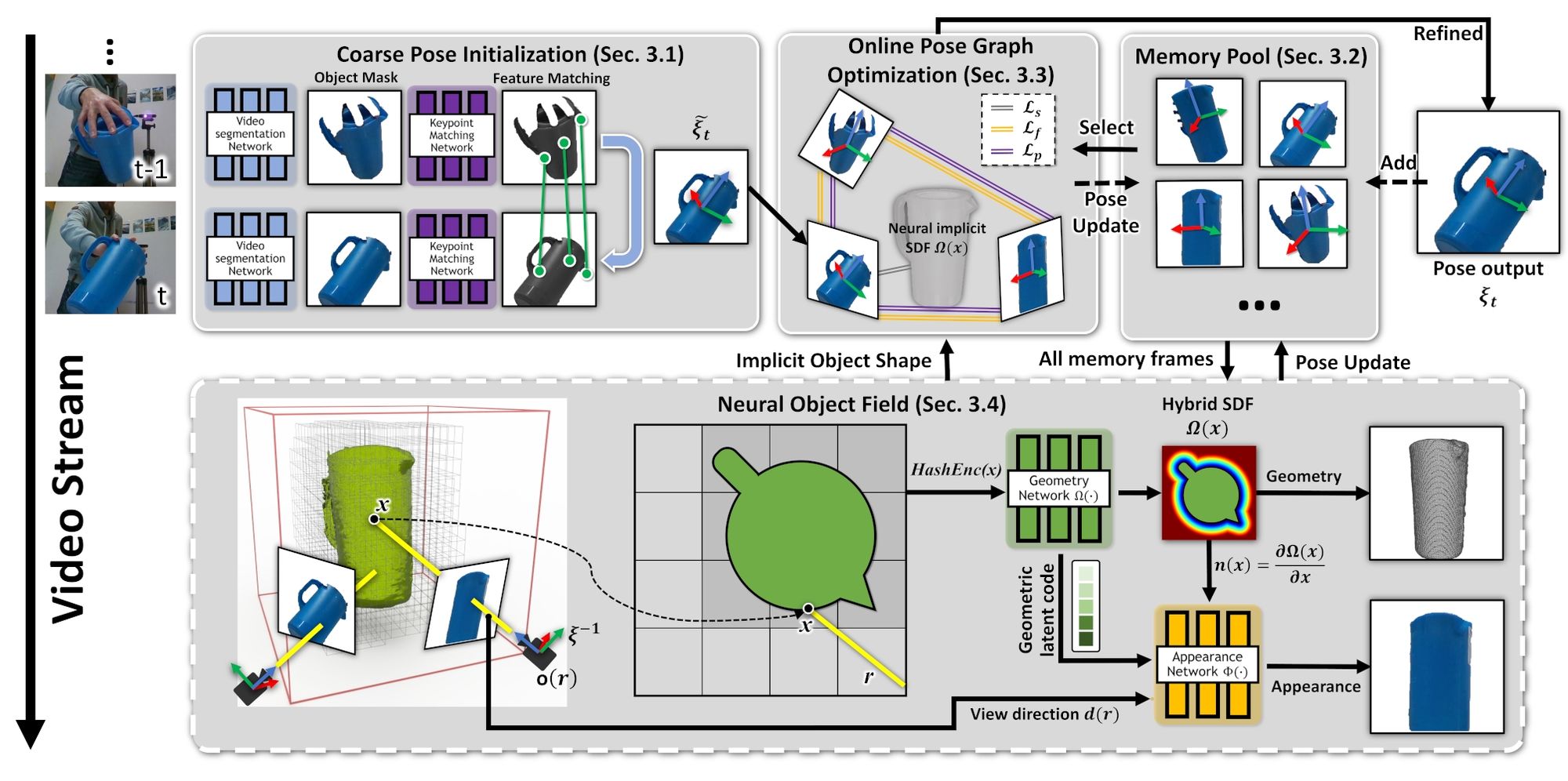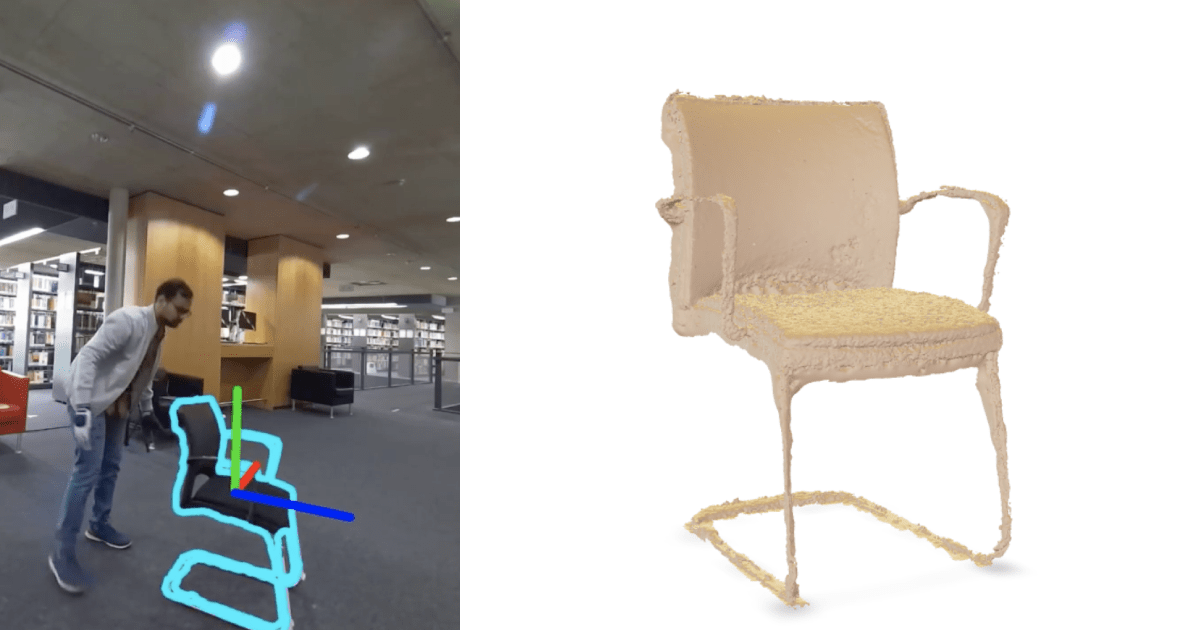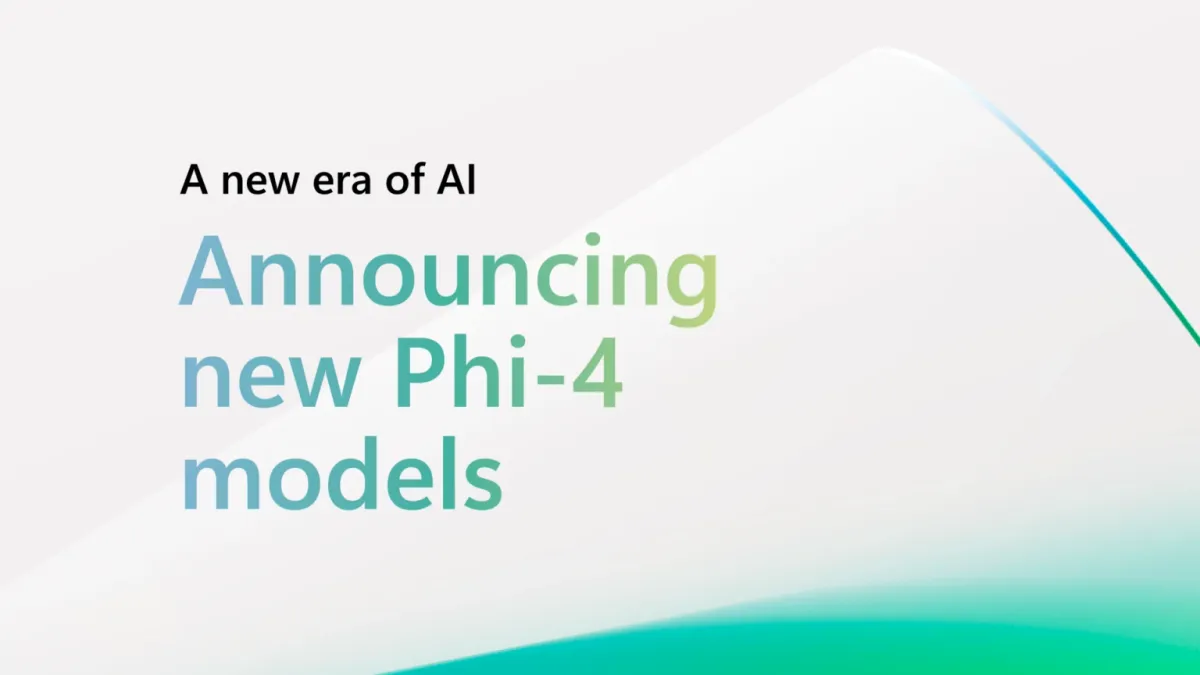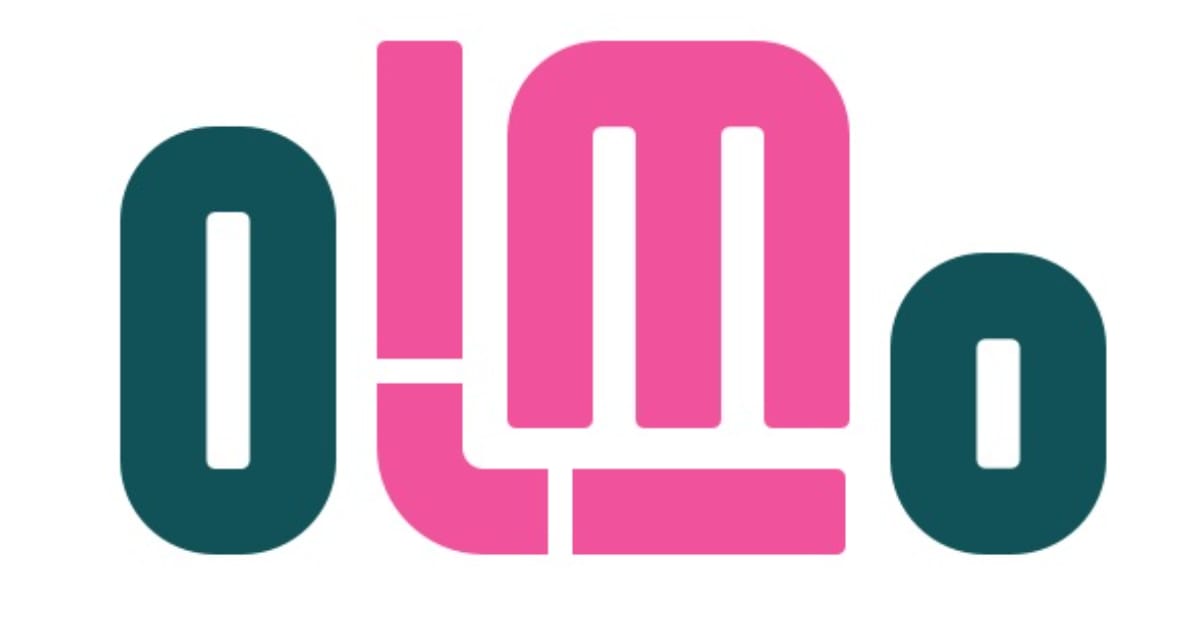Bowen Wen, Jonathan Tremblay, Valts Blukis, Stephen Tyree, Thomas Müller,
Alex Evans, Dieter Fox, Jan Kautz, Stan Birchfield
Abstract
We present a near real-time method for 6-DoF tracking of an unknown object from a monocular RGBD video sequence, while simultaneously performing neural 3D reconstruction of the object. Our method works for arbitrary rigid objects, even when visual texture is largely absent. The object is assumed to be segmented in the first frame only. No additional information is required, and no assumption is made about the interaction agent. Key to our method is a Neural Object Field that is learned concurrently with a pose graph optimization process in order to robustly accumulate information into a consistent 3D representation capturing both geometry and appearance. A dynamic pool of posed memory frames is automatically maintained to facilitate communication between these threads. Our approach handles challenging sequences with large pose changes, partial and full occlusion, untextured surfaces, and specular highlights. We show results on HO3D, YCBInEOAT, and BEHAVE datasets, demonstrating that our method significantly outperforms existing approaches.
Video
Overview

Framework overview. First, features are matched between consecutive segmented images, to obtain a coarse pose estimate (Sec. 3.1). Some of these posed frames are stored in a memory pool, to be used and refined later (Sec. 3.2). A pose graph is dynamically created from a subset of the memory pool (Sec. 3.3); online optimization refines all the poses in the graph jointly with the current pose. These updated poses are then stored back in the memory pool. Finally, all the posed frames in the memory pool are used to learn a Neural Object Field (in a separate thread) that models both geometry and visual texture (Sec. 3.4) of the object, while adjusting their previously estimated poses.






Comments